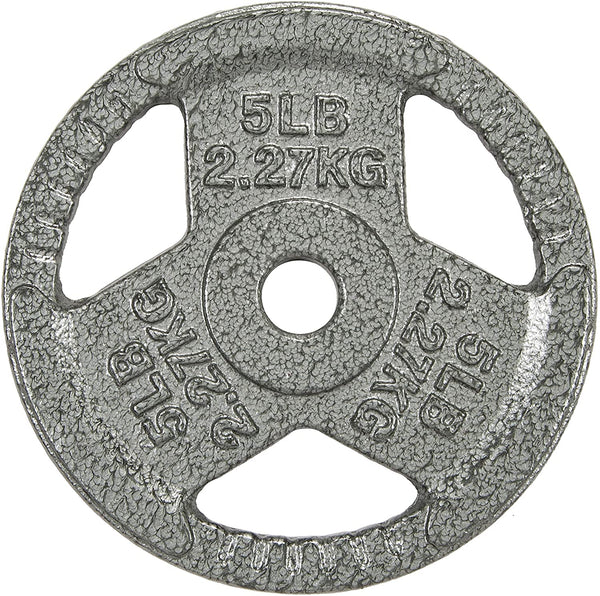Your Cart is Empty
March 06, 2023 3 min read
Weight plates are an essential component of any fitness routine. They provide a great way to add resistance to your workouts, allowing you to build muscle and strength. However, not all weight plates are created equal. Different weights of standard weight plates can provide different levels of challenge and intensity to your workout.
Shop The Collection: Weight PlatesIn order to get the most out of your workout, it's important to understand the different weights of standard weight plates available and how they can affect your workout. Keep reading to learn more about the various weights of weight plates and how to choose the right one for your fitness needs.
 Shop The Gear: MAGMA Standard 1-inch Grip Plates, from $4.99 USD
Shop The Gear: MAGMA Standard 1-inch Grip Plates, from $4.99 USD
There are two main types of weight plates: Olympic weight plates and standard weight plates. Olympic weight plates are made with a 2-inch hole in the center so they can fit on an Olympic bar. These weight plates generally come in larger sizes, ranging from 10 pounds all the way up to 45 pounds. Standard weight plates, on the other hand, have a 1-inch hole in the center and usually only come in smaller sizes, ranging from 1.25 pounds all the way up to 25 pounds. Standard weight plates are often used by beginners who don't yet have the strength to use larger Olympic plates.
The most common weights of standard weight plates range from 1.25 pounds to 25 pounds. Here is a breakdown of the most commonly available weight plates:
You may also find weight plates that are even smaller or larger than the ones listed above. For example, some companies make weight plates as small as 0.5 pounds or as large as 100 pounds.
When choosing a weight plate, it's important to consider your own goals and capabilities. If you're just starting out, it's best to start with smaller weight plates such as 1.25 pounds or 2.5 pounds. As you become stronger, you can gradually increase the weight of your weight plates. It's important to choose weight plates that will challenge your muscles but won't cause injury. As a rule of thumb, if you can lift the weight plate more than 15 times without feeling fatigued, it's probably too light. If you can't complete at least 10 reps without feeling exhausted, it's probably too heavy.
Weight plates offer numerous benefits to those looking to improve their physical fitness. They allow you to add resistance to your exercises, helping you build muscle and strength. They can also help you increase your functional strength, which is the ability to perform everyday activities with ease. Additionally, weight plates are versatile and can be used for a variety of exercises, from squats and deadlifts to push-ups and shoulder presses. Finally, weight plates can be used alone or combined with other forms of exercise, such as cardio or stretching.
It's important to use caution when lifting weights, as injuries can occur if proper form and safety measures are not taken. Before lifting any weight, be sure to warm up your muscles with a few minutes of light activity. When lifting the weight, maintain good posture and keep your back straight. Make sure you can control the weight before attempting to lift it. Finally, always use a spotter if you are lifting heavier weights.
Weight plates are an essential tool for any fitness enthusiast. Understanding the different weights of standard weight plates and how to choose the right one for your needs can help you get the most out of your workouts and stay safe. With the right weight plate, you can challenge yourself and build strength, muscle, and functionality while avoiding injury.